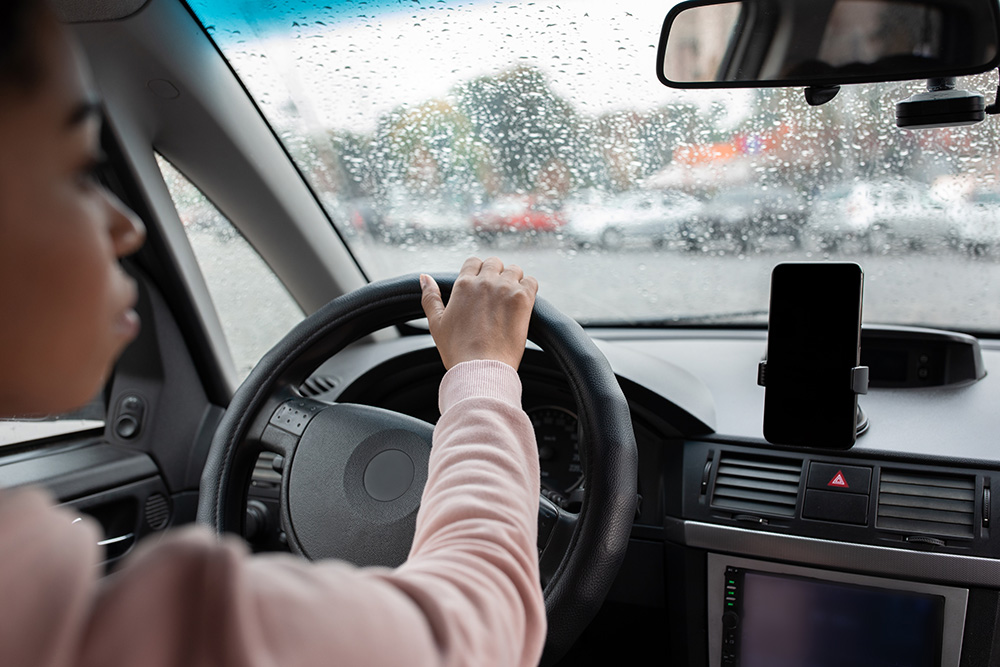Life-Saving Tips To Share With Your Young Drivers

Heavy rains, sleet, driving snow? Winter driving can be a nail-biter for experienced drivers.
According to the National Safety Council, teen and young drivers are particularly at risk since they generally lack experience of navigating inclement roads. They are not familiar with the risks of winter travel.
Some preparation can help young and new drivers reduce their chances of becoming involved in a crash and help lower their risk of injury.
For starters, NSC suggested having a winter driving conversation with your teen. Explain to teens about the dangers you have encountered, what they can expect and help them make safe decisions.
NSC offered the following tips to discuss with your teen and young drivers.
Prepare for Inclement Weather
Preparation for winter driving begins with an emergency road kit. If you live or drive to an area with snow, include a snow shovel. Also make sure to bring an extra phone charger/brick, especially if you are traveling in areas where you may be stranded without power.
Winter-specific maintenance items every young driver should understand:
- Test your battery; battery power drops as the temperature drops.
- Make sure the cooling system is in good working order.
- Have winter tires with a deeper, more flexible tread put on your car.
- If using all-season tires, check the tread on your tires and replace if less than 2/32 of an inch.
- Check the tire pressure; tire pressure drops as the temperature drops.
- Check your wiper blades and replace if needed. Look for frayed edges, hardened rubber and scraping across the windshield.
- If you live or drive to cold regions, add wiper fluid rated for below freezing temperatures.
- Clear away ice and snow before every drive.
Make A Plan
Just like coaches entering the big New Year’s day games, NSC recommends young drivers have a plan for their winter excursions.
As an example, one North Dakota driver recently went on a local store errand during a day of minus 20 degrees. Their vehicle battery died in the parking lot and they needed to contact a friend to help jump their vehicle. The driver packed blankets that kept her warm in the cab.
What if that battery had died in a remote region?
According to NSC, the length of the trip doesn’t matter. Teens should prepare for inclement weather hazards whether they are going on a ski trip or an errand across town.
Get your teen drivers in the habit of devising a safe driving plan–and sticking with it. Winter roads are littered with drivers who had good intentions but forgot about a safety plan or did not implement the plan they created.
Teens should check local weather to know what they will encounter, NSC explained. They should also make sure family or friends know their destination during inclement weather.
Ask your teen to plan for extra time so they don’t feel rushed, which can lead to hasty and dangerous decisions while driving. Ice, snow and blizzards can cause anxiety.
Include the following to your teen and young driver’s pre-trip plan:
- Share travel itinerary and travel route with your family and friends. This is an easy step to forget, but it also may be crucial to survival in case of road emergency or getting caught in inclement weather.
- Plan for emergencies and check alternate routes to see if they are safe or closed for the winter. Be flexible but prepared.
- Clean vehicle sensors and cameras before and during the trip. Dirty sensors can reduce the effectiveness of assistive-driving features such as automatic emergency braking.
- Prevent carbon monoxide poisoning by turning off the vehicle anytime it is parked in a garage or garage with the door open.
- Check the forecast every day you intend to drive. Wait out storms and plan around them.
- Prevent gas line freezing by keeping the vehicle tank at least half full.
Avoid Unnecessary Errands
Simple errands can turn into accidents in a hurry during a storm. Remind your teen and young drivers to avoid travel unless necessary.
- Keep the pantry full of supplies early.
- Take a few minutes to consider whether a change of plans may be a better decision than forging ahead.
- For important trips, leave extra time and try to leave early in the day. Roads are generally clearer when the sun has had a chance to warm roads compared to driving in evening hours.
- Driving to a destination during a snowstorm, especially far from home, does not provide the safest environment for learning how to navigate a winter driving experience.
- If they do encounter inclement conditions, advise them to drive slowly even if companions want to get somewhere in a hurry.
- Advise your teen keep plenty of distance between their car and the vehicle in front of them. NSC advises eight to 10 seconds of distance between vehicles during a storm.